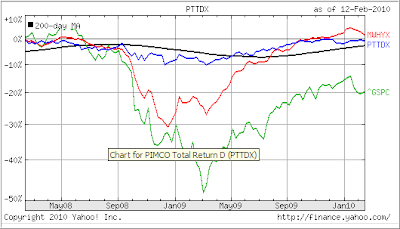 Some new readers of this blog are not up to speed as to what trend tracking is all about and still have a buy-and-hold mentality. Here’s one comment I recently received:
Some new readers of this blog are not up to speed as to what trend tracking is all about and still have a buy-and-hold mentality. Here’s one comment I recently received:
While a 7% sell stop strategy may prevent major losses during a Market melt down, they also greatly inhibit the upside over the long run.
John Bogle, and many other highly respected investors point out the folly of trying to time the Market. There have been innumerable studies that show that moving in and out of ETF’s and Mutual funds over the long run can cost an Investor as much as 25% on return.
While I do admit that being stopped out might prevent a major portfolio loss, it also locks in many 7% losses while at the same time incurring Tax and trading expenses.
Here’s the thousand dollar question! Once your stopped out, when do you decide to buy back in? And when you do buy back in is there any guarantee the Market won’t stop you out again for another 7% loss? Of course this loss will be on newly invested money that probably missed out most of the rally after the first stop out.
Since all of these issues have been addressed before, I will just comment in general. Most studies in support of buy and hold (b&h;) have been done by the staunchest supporters of that investment approach, which makes the results biased.
Dalbar and Morningstar come to mind. I’ve seen some of the results in the past, and it seemed to me that they attempted to cherry pick those periods that supported their point of view, because bear markets were never included as if they did not exist.
You have to realize that the reason b&h; gets so much support is that that’s where the compensation for many comes from. Wall Street’s army of commissioned brokers needs to have a way to generate revenue no matter what the market is doing. If you’re not invested and in cash on the sidelines (for good reasons), no commissions can be generated.
The meltdown of 2008 has supported my long-held view that it is more important to control downside risk than to participate in every up tick of the market. Case in point is the sharp rebound of 2009, over which most brokers have gone wild, yet the S&P; 500 still needs to rise 22.55% (as of Friday) to reach the level our Trend Tracking Indexes signaled a sell on June 23, 2008.
With the markets starting to crack, this will be a tough one to make up, and could very well take many years.
There always seems to be a battle brewing, and investors, just like sports fans, have the urgent need to see a winner, no matter what. Back in the late 80s and 90s, it was load mutual funds vs. no load funds. Over the past few years, it was ETFs vs. no load funds and, of course, there is always at good time to pit trend tracking vs. b&h.;
Personally, I think it’s the wrong attitude. This is not about one being superior to the other; it should have to do with personal choice only, and my preference is the use of trend tracking.
I have received the phone calls back in 2001 when investors lost a big chunk of their portfolios and again in 2008 when disaster struck. I’ve heard the sad stories as a result of having held assets through a bear market that ended up changing lives forever.
Despite my bias, it is not a matter of right or wrong. If you can accept the fact that every so often a bear market wipes out some 50% of your portfolio, then you should stick with b&h.; If you can’t handle that, then you should consider trend tracking. It’s all about having a choice about what fits your emotional make up better and not a matter of right or wrong.
To be clear, no one investment approach is perfect. We live with the imperfections of trend tracking by getting whipsawed occasionally and try to keep investment losses manageable so that they can be made up quickly.
On a fundamental basis, I need to point out that years (or decades) of financial mismanagement have come to an end with the burst real estate/credit bubble, not just here in the U.S. but worldwide.
As a result, there is a gigantic debt overhang and inability to pay along with reduced revenues on all levels ranging from Federal, State and municipalities the outcome which has not been absorbed yet by the current economic rebound.
My view is that economic and global uncertainly is here to stay and with it the ever present danger that a bear market can strike again. As I have repeatedly posted, the alleged economic recovery was built on nothing but hype, hope and government stimulus.
I for one prefer not living in an investment dreamland where I can simply buy and hold a mutual fund or ETF without worry. Once reality sets in again, I will be glad that there is an investment option that will keep my portfolio from getting a serious haircut.
That’s my choice—you have to make yours.







